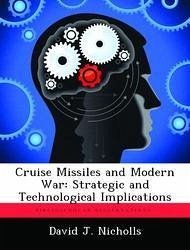Nicht lieferbar

Cruise Missiles and Modern War: Strategic and Technological Implications
Versandkostenfrei!
Nicht lieferbar
This study examines how the proliferation of technologies has remedied the historical shortcomings of cruise missiles to produce a weapon that has significant military capabilities. The argument in this study is that cruise missiles are more cost-effective weapons than manned aircraft and ballistic missiles. It argues, furthermore, that the proliferation of cruise missile systems and technologies will transform cruise missiles into important and perhaps decisive weapons in the twenty-first century.The second theme of this study is that the United States must develop the ability to defend itsel...
This study examines how the proliferation of technologies has remedied the historical shortcomings of cruise missiles to produce a weapon that has significant military capabilities. The argument in this study is that cruise missiles are more cost-effective weapons than manned aircraft and ballistic missiles. It argues, furthermore, that the proliferation of cruise missile systems and technologies will transform cruise missiles into important and perhaps decisive weapons in the twenty-first century.The second theme of this study is that the United States must develop the ability to defend itself against a cruise missile attack. For a number of reasons, it is unlikely that U. S. defenses could entirely defeat such an attack in view of the difficulties of detecting and engaging a mass attack with cruise missiles that a determined enemy could use to overwhelm the defenses. Bearing in mind reasonable estimates of the numbers of cruise missiles that states could possess, this study concludes with the argument that the optimal strategy for an adversary against which the United States must defend itself is an attack against U. S. logistics and supply centers. This represents the nature of the asymmetric attacks that the United States will confront in the twenty-first century.







